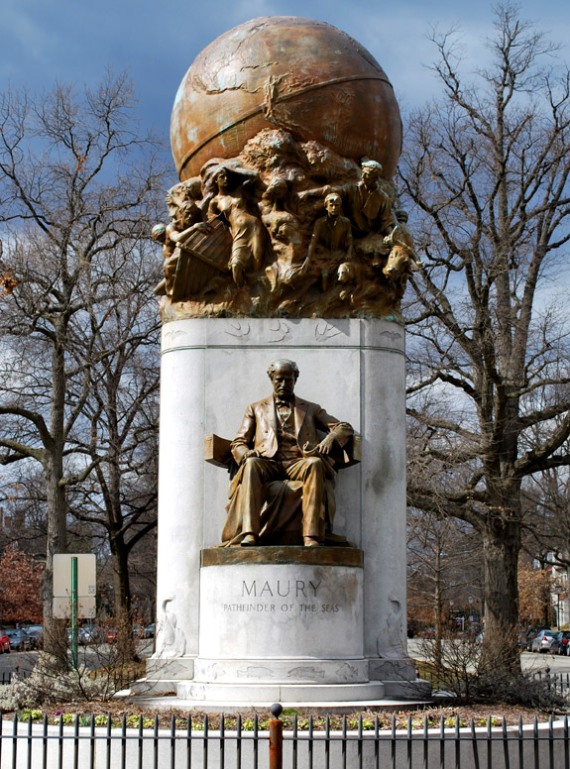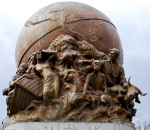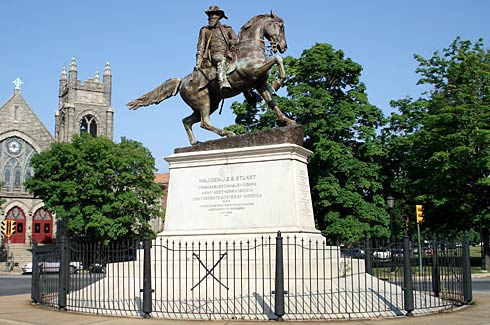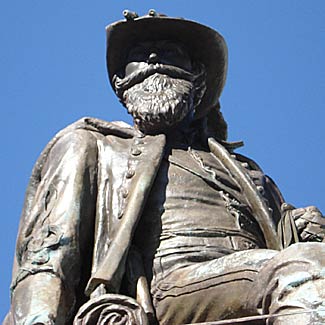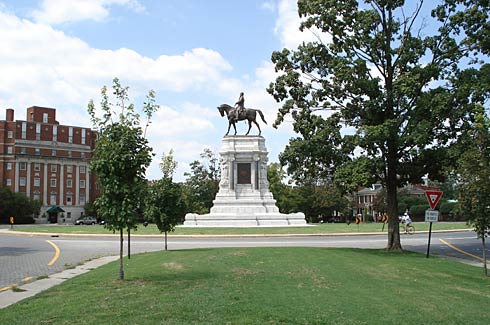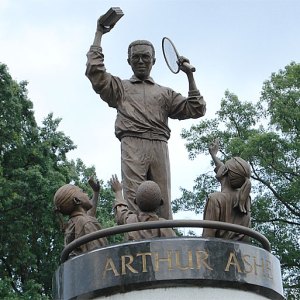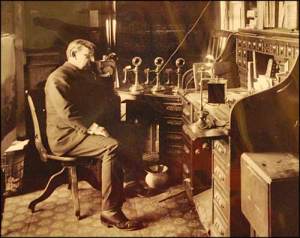
- Lewis Ginter (Valentine Richmond History Center)
Major Lewis Ginter is one of the most important figures in the development of Richmond and left a large imprint on our city. I’ve written about his many accomplishments and lasting achievements, but I want to go a step further.
We should erect a statue of Ginter in Richmond. With statues to honor so many great figures in Richmond’s history, why is there no statue to the man I consider the “Greatest Richmonder of All Time?”
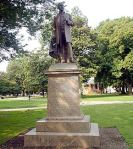
Joseph Bryan in Monroe Park
We have a statue of Joseph Stewart Bryan — a contemporary and good friend of Ginter’s — in Richmond’s Monroe Park, dedicated in 1911 [
see more on the statue]. A list of Ginter’s accomplishments and philanthropy would be much longer than one for Bryan. But why nothing for Ginter?
There are indications that he may not have wanted to be honored. The famed Jefferson Hotel opened in 1895 and has been a perennial five-star historic gem ever since [
Read more]. In the book
Richmond: The Story of a City by Virginius Dabney:
Leading citizens sought to place a plaque in the hotel, celebrating the all-important contributions of Major Ginter in bringing the Jefferson into existence, but the modest man refused to allow it.
Ginter was known to be very private. He never married and left his inheritance to his niece, Grace Arents, and many other charitable organizations. There are few photos of him available and he likely wanted it that way. I’ve read in various books that he may have instructed someone to destroy most of his financial and personal records.
Despite his wishes for privacy, I think the city should celebrate him with a statue. That’s what we do in Richmond. Ignoring cost for a moment, I have three locations to nominate.

Intersection of Laburnum Avenue, Brook Road and Fauquier Avenue (at center)
Intersection of Laburnum Avenue and Brook Road [map]
This is perhaps the most appropriate spot, as Ginter in the mid-1880s bought controlling interest in much of then-named Brook Turnpike and bought 100s of acres on either side of the road in preparation for his visionary Northside development that evolved into today’s Ginter Park, Sherwood Park and Bellevue.
He eventually ran streetcars along Brook Road as well, turning at this intersection on to Fauquier Avenue toward his progressive recreational development Lakeside Park in the 1890s — now known as Jefferson-Lakeside Country Club.

General A.P. Hill statue at Laburnum & Hermitage
Another good reason to place his statue there is the parallel with the
General A.P. Hill statue at Laburnum Avenue and Hermitage Road. Ginter served under Hill in the Civil War, according to
Lewis Ginter Botanical Garden: 25 Years and Growing by Frank L. Robinson and Lynn Kirk:
Declining a promotion to brigadier, Ginter accepted the rank of major under General A.P. Hill, and for the remainder of his life he was addressed as Major Ginter … [Ginter] donated land and was instrumental in the construction of the monument.
The problem a statue at this unique five-way intersection is that it is too busy and there are too many cars needing to take left turns. Getting traffic around even a small circle would be difficult. The intersection could be widened, but it is not logical to spend the amount of money for the potential of creating a dangerous intersection.

Intersection of Brookland Parkway, Loxley Road and Rennie Avenue
Intersection of Brookland Parkway, Loxley Road and Rennie Avenue [map]
This might be my favorite, just because it seems like the easiest and safest place to establish a lasting monument to Ginter without interrupting current traffic patterns.
This intersection is part of Sherwood Park and is already in the shape of two triangles. There is plenty of room to establish two small triangle-shaped landscaped gardens within the intersection, perhaps with a statue to Ginter in one of them. No matter what, this intersection needs a more appropriate and distinguished layout.
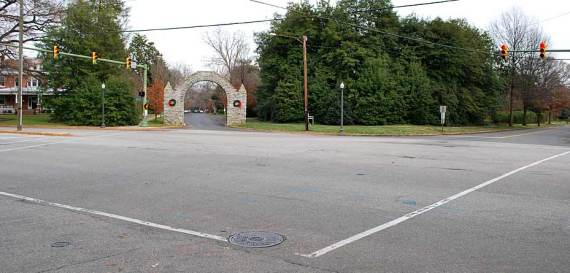
Intersection of Hermitage Road and Bellevue & Pope avenues
Intersection of Hermitage Road and Bellevue & Pope avenues [map]
This seems like the least likely but is appropriate because of the train that Ginter ran through this area toward the quarries in the area that became Bryan Park and Lakeside.
Also, it would be a shame to take attention away from the arch at Pope Avenue. Hermitage Avenue itself is a historic district and would likely have some say in any adjustments to the roadway at this five-way intersection.
* * *
Cost? Let’s use Richmond’s statue honoring tennis champion and Richmond native
Arthur Ashe as a comparison.
Ashe is honored with a 12 foot tall bronze statue at Monument Avenue and Roseneath Road that stands on a 87,000 pound granite block and rises 28 feet above the street. It was created by artist Paul Di Pasquale and was dedicated in July 1996 with a cost of nearly $450,000 (according to figures from the Richmond Times-Dispatch).
Let’s assume that a more modest statue to Ginter would cost $500,000, considering inflation, but not including the cost to adjust traffic patterns at the selected intersection. Fund-raising would not be easy — a group or a philanthropist would have to back the long-overdue statue.
Ginter died October 1, 1897. With all of his success and philanthropy — and considering the propensity to honor great Richmonders with statues — there must have been movement at that time to honor Ginter that fell short. His friend Bryan was honored in 1911 after his death in 1908, and maybe by then people had begun to forget his accomplishments? Major Lewis Ginter’s name should have been the 10th on the list.


